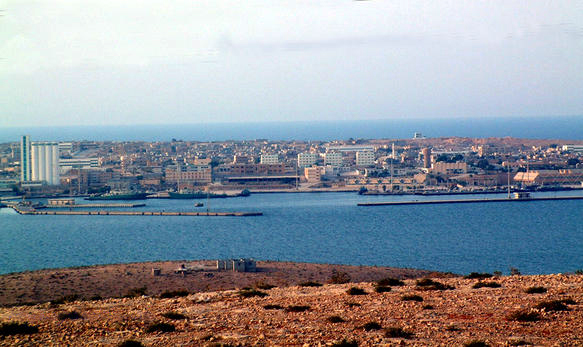Tobruk, Libyan Arab Jamahiriya

population: 0.12 million
extension: 6,908 square kilometers
Museums
If you are in Tobruk and interested in visiting museums, one place to consider is the Tobruk War Museum. The museum features displays and artifacts related to the battles that took place in and around Tobruk during World War II.
If you're looking for other museums in the area, there's also the Omar Al-Mukhtar Museum, which is dedicated to the life of the Libyan resistance fighter Omar Al-Mukhtar. In addition, the Red Castle Museum in nearby Tripoli has a wide range of exhibits showcasing Libya's history and culture.
Food
Some of the most recommended and popular dishes to try in Tobruk according to local people include:
1. Bazeen - a traditional Berber dish made of a thick porridge-like mixture of flour and water, served with a variety of stews and sauces.
2. Couscous - another popular Berber dish consisting of small steamed balls of semolina, typically topped with vegetables, meat, or seafood.
3. Shakshuka - a North African breakfast dish made of eggs cooked in a tomato-based sauce with onions and spices.
4. Harira - a hearty soup made with chickpeas, lentils, tomatoes, and spices, often served during Ramadan.
5. Grilled meats - lamb, chicken, and beef are all popular choices for grilling and are often seasoned with herbs and spices like cumin and coriander.
6. Baklava - a sweet pastry made of layers of phyllo dough, chopped nuts, and honey syrup, commonly found throughout the Middle East and North Africa.
7. Mint tea - a refreshing and ubiquitous drink in Libya, made by steeping fresh mint leaves in hot water and sweetened with sugar.
Activities
Some fun activities that locals enjoy in Tobruk include:
1. Visiting the historic Tobruk Fortress and exploring its underground tunnels.
2. Taking a guided tour of the WWII battlefield sites and bunkers.
3. Relaxing at Marsa Al-Hariga beach or other nearby beaches.
4. Enjoying the local cuisine at restaurants and cafes, such as trying fresh seafood dishes or traditional Libyan sweets.
5. Exploring the local markets and shopping for souvenirs or handicrafts.
6. Joining a desert safari trip to explore the surrounding landscapes.
7. Participating in cultural events and festivals, such as the Qarafa Festival or the Spring Festival.
